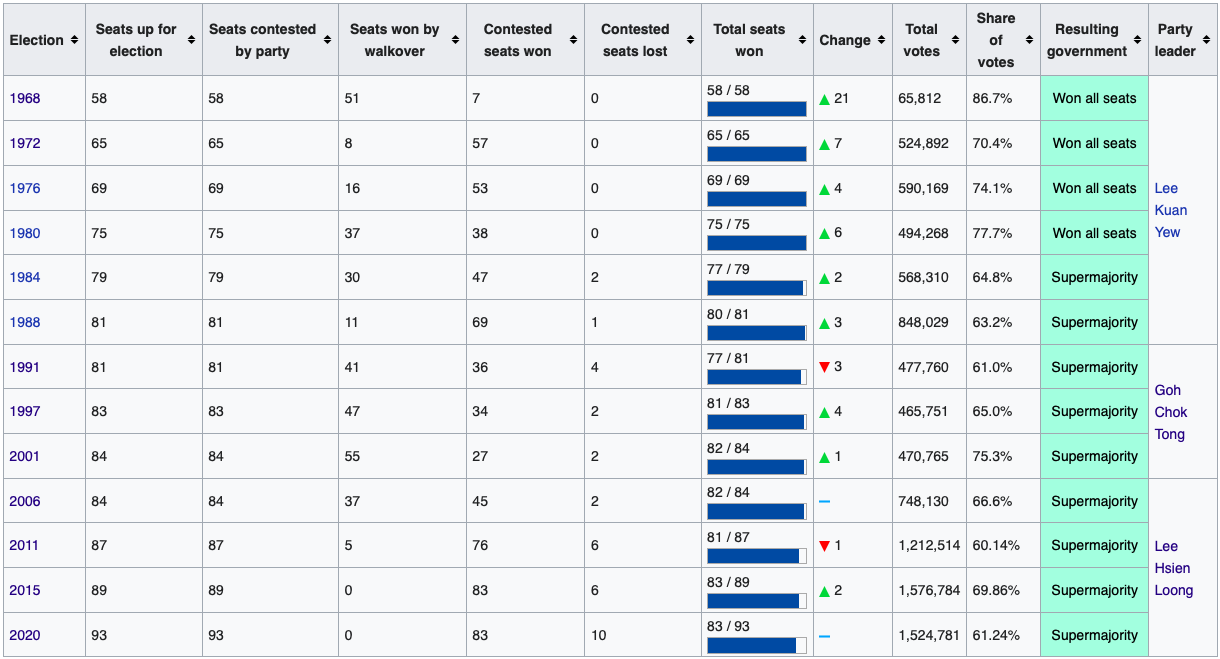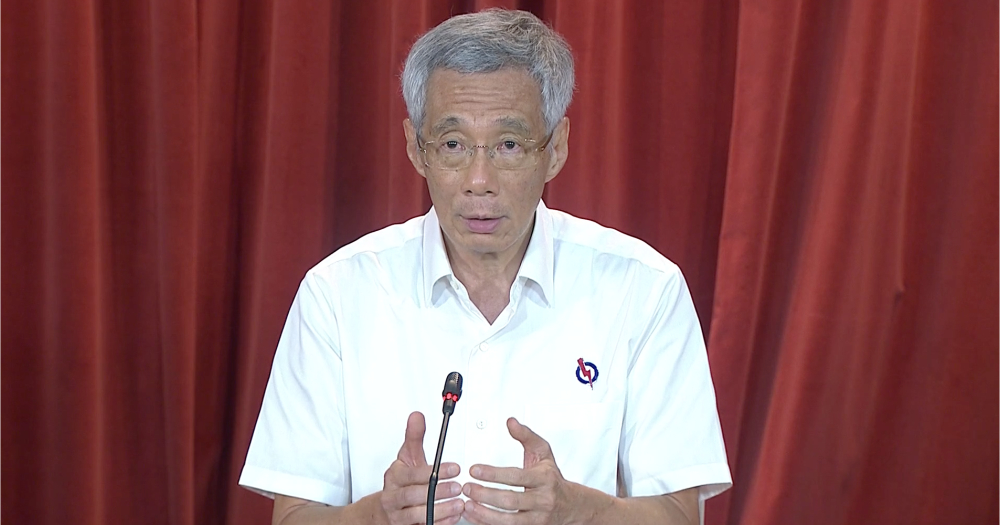The People's Action Party (PAP) has been Singapore's ruling party since 1959, before Singapore's independence.
On Saturday, July 11, the PAP won GE2020 with 61.24 percent of votes, compared to 69.86 percent in the last election in 2015.
The Workers' Party (WP), which got six seats in the 2015 GE, won 10 seats in 2020.
In the press conference held shortly after the GE results were out, Prime Minister Lee Hsien Loong called it a "clear mandate" and a "good result", even though the share of the popular vote was not as high as he would have liked.
Whether it was a slightly better or worse result that PM has hoped, the win extended PAP's uninterrupted reign well into its sixth decade, making it one of the longest-serving ruling parties in existence.
Is it a bad result for the PAP?
Singaporeans with a shorter memory will think this is a really bad result for the PAP, having barely achieved over 60 per cent vote share and suffering a 8.62 per cent swing against it.
But most political observers know that 2015 was an anomaly.
The PAP landslide in GE2015 was achieved on the back of Singapore's SG50 celebrations, the appreciation of the late founding prime minister Lee Kuan Yew's contributions, and the view that the government had addressed policy issues on immigration, housing and transport.
In his GE2020 reflections, former PAP MP Inderjit Singh noted that GE2020 does not demonstrate the lowest support for the PAP, and mentioned that GE2015 was outside of the norm.
However, Inderjit compared GE2011 to GE2020, and noted that the PAP saw only a 1 per cent improvement over GE2011.
"Is this 1% improvement over 2011 good enough considering that the odds were stacked against the opposition in this GE and typically when the PAP calls for an election in moments of crisis as it did in 2001, they tend to do very well, " he asked.
He also noted that there were four budgets rolled out to help Singaporeans just before this GE.
So, where does 2020's share of votes compare in the history of PAP's electoral performance?Its 61.24 per cent is its third poorest showing (61 per cent in 1991 and 60.14 in 2011) in history.
Biggest swing?
The second question to ask is: Is 8.62 per cent the biggest swing against the party?
Nope.
The biggest swing for PAP was the 12.9 per cent swing against it in 1984.
This is followed by the 8.7 per cent swing against it in 2006, after the high of 75.3 per cent PAP achieved in 2001 following the economic crisis facing Singapore after the September 11 attacks.
Most seats lost?
Did PAP lose the most seats it contested though?
Yes. The PAP has experienced the most seats lost (10 seats) since independence.
It is the first time the PAP has lost two GRCs.
More hotly contested?
This is the second GE in a row where PAP experienced contests in all seats.
From 1991 to 2006, the PAP experienced walkovers (no contests) ranging from 37 seats to 55 seats.
This means that PAP was returned to power three times from 1991 to 2006 on Nomination Day.
 Source: Wikipedia.
Source: Wikipedia.
'60s' the new normal?
Looking at the past nine GEs, the PAP has scored mainly 60 per cent vote share.
It has received fewer than 65 per cent vote share in 5 out of its last 9 GEs.
Prime Minister Lee Hsien Loong, who entered politics in 1984 as a young MP, would have witnessed these nine general elections.
He would have to also witness five of out nine GEs where the PAP suffered swings against it.
Oh no.
If you like what you read, follow us on Facebook, Instagram, Twitter and Telegram to get the latest updates.
